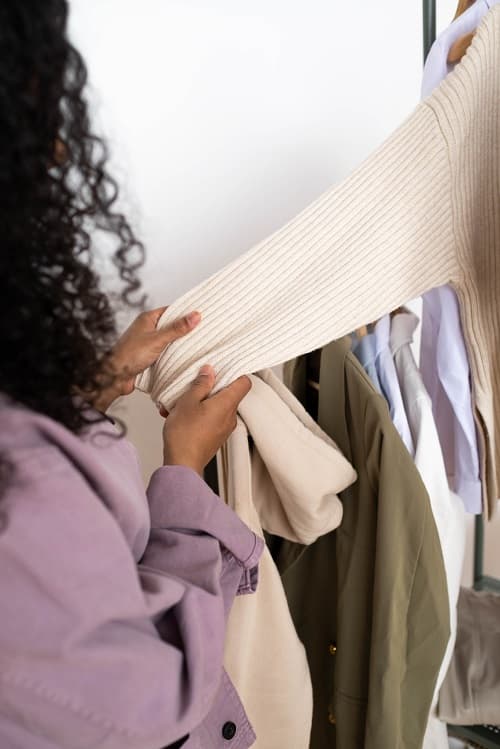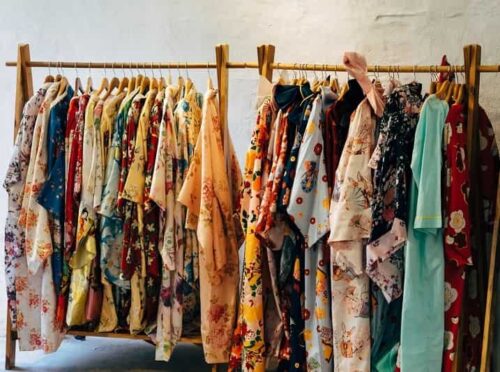The reality is, second-hand fashion industry is currently poised to surpass the luxury market in size. The growth of the fashion resale economy is driven by shifting consumer perspectives, as they increasingly recognize the significance of sustainability and environmental support.
Fashion has undergone a significant shift, moving away from the pursuit of the trendiest styles. Instead of solely focusing on popular brands and designs, consumers are now taking into account the environmental impact of their clothing choices and seeking out other sustainable options for them.
Many consumers have now realized that purchasing secondhand items helps prolong the lifespan of products, reduces the need for unsustainable new production, and prevents waste from ending up in landfills. Recent data indicates that sustainable fashion sectors like recycling, upcycling, and rental are gaining popularity, but it is secondhand fashion that is expected to experience the most substantial growth.
The evolution of second-hand fashion is what has driven the concept of “thrifting” into becoming a buzzword and bold activity amongst millennials and Gen Zs. In fact, experts predict that the secondhand clothing market will be twice the size of fast fashion by 2030.
However, the sustainability of secondhand fashion is a multifaceted issue that requires careful consideration of various factors. While it can contribute to waste reduction and promote a circular economy, it is not a universal solution to all sustainability challenges in the fashion industry.
 Photo: Pexels/Markus Winkler
Photo: Pexels/Markus Winkler Ahead are some important facts to bear in mind when assessing the true sustainability of second-hand fashion.
How Second-Hand Fashion is Improving Sustainability
Extending the lifespan of garments
Second-hand fashion allows garments to be used for longer periods, reducing the demand for new production and the associated environmental impact. By extending the lifespan of clothing items, second-hand fashion can help reduce resource consumption and waste generation.
Reducing textile waste
The fashion industry is notorious for generating significant amounts of textile waste. Second-hand fashion can divert clothing from ending up in landfills, giving them a second life and reducing the environmental impact of disposal.
Lowering carbon emissions
The production of new clothing involves various processes that contribute to carbon emissions, such as raw material extraction, manufacturing, transportation, and retail operations. Second-hand fashion can help mitigate these emissions by reducing the need for new production, thereby lowering the carbon footprint associated with the fashion industry.
Promoting a circular economy
Second-hand fashion is a key component of a circular economy, which aims to minimize waste and maximize resource efficiency. By keeping garments in circulation and encouraging reuse, second-hand fashion contributes to the overall sustainability of the fashion industry.
 Photo: Pexels/Markus Winkler
Photo: Pexels/Markus Winkler Challenges of Embracing Second-hand fashion
Demand and supply imbalance
While the demand for second-hand fashion has been growing, there are concerns about the supply being unable to meet the increasing demand. The availability of high-quality, desirable second-hand clothing items can be limited, especially for specific sizes, styles, or designer brands. This could potentially lead to a continued reliance on new clothing production.
Quality and durability
The quality and durability of second-hand clothing can vary widely. Some items may be in excellent condition, while others may require repairs or may have shorter remaining lifespans. Ensuring that second-hand clothing is durable and of good quality is crucial to maximizing its sustainability benefits.
Transportation and logistics
The distribution of second-hand clothing involves transportation, which can still contribute to carbon emissions and environmental impact. Efficient logistics and localized second-hand markets can help minimize these impacts, but it remains an ongoing challenge.
Displacement effects
While second-hand fashion can reduce the demand for new clothing production, it is important to consider potential displacement effects. For example, if the popularity of second-hand fashion leads to decreased sales of new clothing, it could impact workers in the fashion industry and related supply chains.
How to Shop SecondHand Clothing More Responsibly
Research and plan
Before going shopping, spend some time researching local second-hand stores, thrift shops, consignment shops, or online platforms that sell pre-loved clothing. Look for shops that align with your values and have a good reputation for quality and fair pricing.
Quality over quantity
Instead of buying a large quantity of cheap items, focus on finding high-quality pieces that will last longer. Look for well-made clothing with durable fabrics and stitching. Pay attention to details like buttons, zippers, and seams.
Inspect the items
Take the time to thoroughly inspect the items you’re interested in. Check for any stains, tears, or signs of wear. Make sure the item is in good condition and can be easily repaired if needed. This will help you avoid purchasing items that will quickly end up in the landfill.
Try before you buy
If you’re shopping in-store, try on the clothes to ensure they fit well and suit your style. Sizing can vary between brands and over time, so it’s important to try things on before making a purchase. If you’re shopping online, carefully read the sizing information and check the seller’s return policy in case the item doesn’t fit.
Prioritize natural fibers
Look for clothing made from natural fibers like cotton, linen, wool, or silk. These materials are more environmentally friendly compared to synthetic fabrics like polyester or acrylic. Natural fibers are biodegradable and have a lower environmental impact.
Diversify your sources
Explore different second-hand options beyond traditional thrift stores. Consider local clothing swaps, online resale platforms, garage sales, or even community-based social media groups dedicated to buying and selling pre-owned items. This can help you find unique pieces and support local sellers.
Donate or sell your own clothes
Regularly declutter your own wardrobe and donate or sell items you no longer wear. By extending the lifecycle of your clothes, you contribute to the circular economy and reduce the demand for new clothing.
Wash with care
Once you’ve purchased second-hand clothing, wash it before wearing it. Follow the care instructions on the label to ensure proper cleaning. By washing second-hand items, you remove any dirt or bacteria and make them fresh and ready for use.
Spread the word
Share your positive experiences with second-hand shopping and encourage others to join in. Raising awareness about the environmental and social benefits of buying second-hand can inspire more people to shop responsibly.






